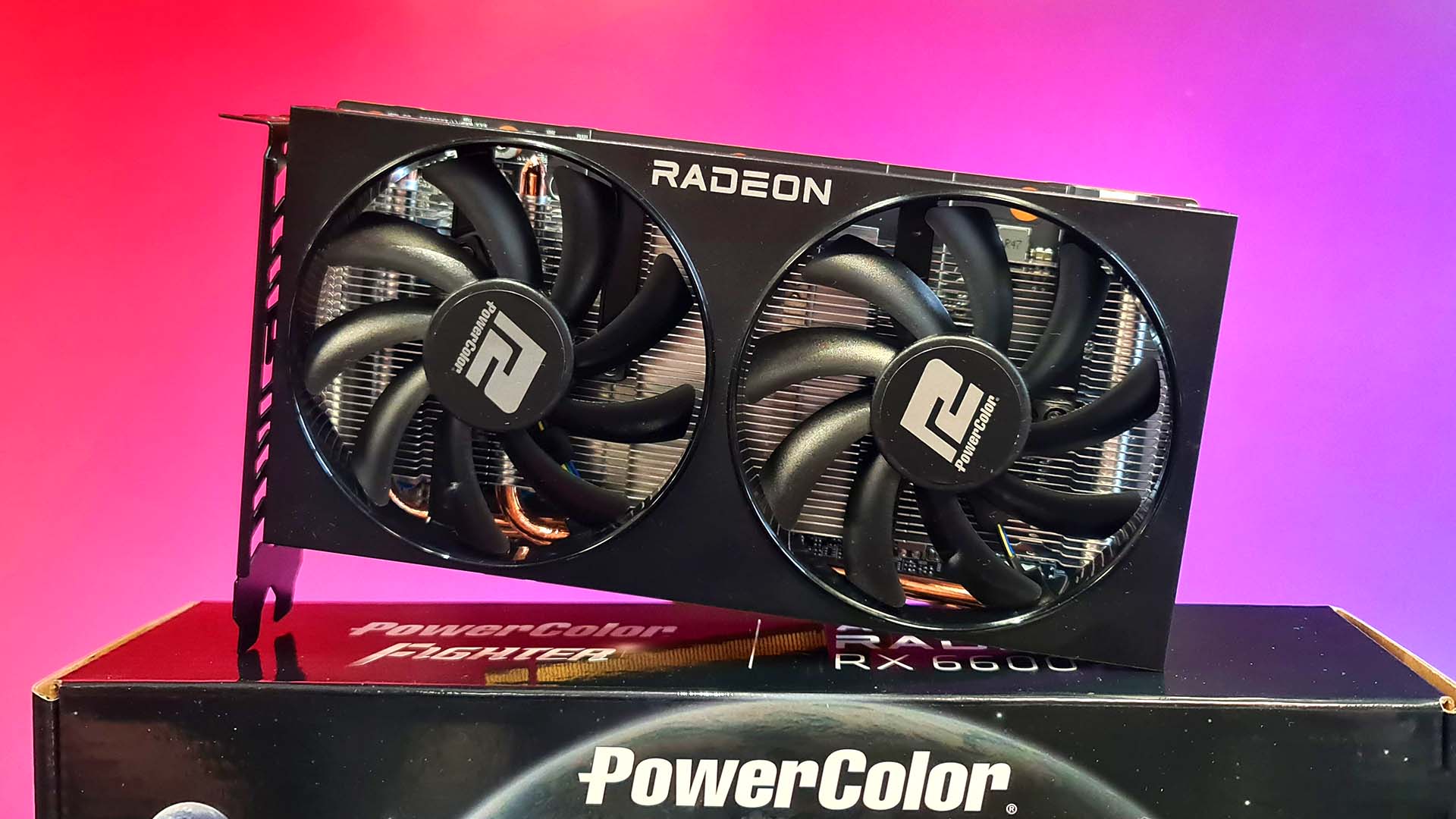Our Verdict
The Radeon RX 6600 delivers enough for modern 1080p gaming, which is good going considering AMD has preened this package into a much more power-savvy design than the RX 6600 XT. That said, Nvidia's RTX 3060 12GB is still the card we'd recommend at this price point, if you can find one in stock. Otherwise, the RX 6600 makes for a viable, if not sparkling, alternative.
For
- Decent 1080p performance
- Quiet
- Power efficient
- Works with 450W PSUs
Against
- Often slower than an RTX 3060
- ... and 4GB less memory
- Weaker ray tracing performance
PC Gamer's got your back
The AMD Radeon RX 6600 is the latest and cheapest graphics card out of the red team's design works, and it has one simple task ahead of it: compete with Nvidia's GeForce RTX 3060. To do that, AMD's bringing more of the RDNA 2 architecture we've grown fond of, but in a pared-back and slimmed-down package that just falls short of my hopeful expectations.
AMD was long the dominant force in budget graphics cards and often able to sweep the charts in contests of performance-per-dollar versus Nvidia. As of late, however, neither company has focused all that much on the cheaper side of things (thanks, global chip shortage) and that's left us with a growing void of cheaper chips.
But there are some that straddle the ephemeral concept of 'entry-level' today. AMD already offers the $379 RX 6600 XT and Nvidia's cheapest is the $329 RTX 3060. Both far from entry-level as we once knew it, but that's what we're working with, and what AMD is up against with the RX 6600.
AMD Radeon RX 6600 specifications
What are the AMD Radeon RX 6600 specs?
The Radeon RX 6600 neatly fills a gap beneath the Radeon RX 6600 XT in the red team's RX 6000-series line-up, and it's safe to say there are few, if any, real surprises here when comparing the two cards. There are a few differences to note between the two, though, those which make it all the more important to consider stretching to the extra bucks of the XT model, if possible.
First off, the major similarities. AMD's RDNA 2 architecture is the company's best to date, and it's already found its way into an impressive line-up of graphics cards, including the impressive Radeon RX 6900 XT and Microsoft and Sony's latest consoles. It is, of course, also the architecture powering the RX 6600 XT and RX 6600.
If you want to read more about the RDNA 2 architecture, I recommend you check out our Radeon RX 6800 XT review. That's where we explore its changes and improvements in more detail.
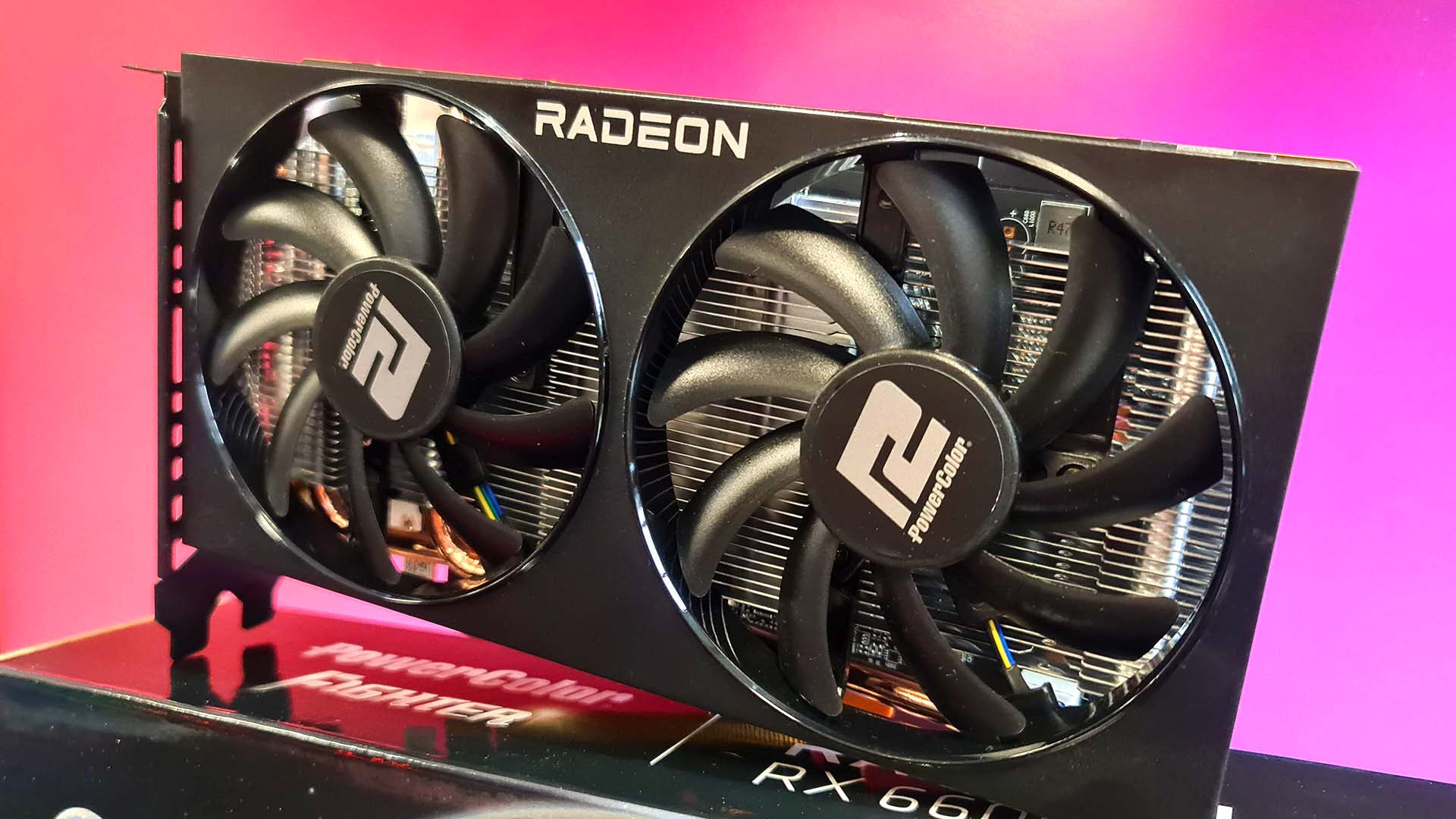
This architecture's inclusion is a good thing, generally, as the RDNA 2 architecture has proven itself an impressive step up over AMD's first-generation RDNA. For the RX 6600 specifically, the RDNA 2 architecture comes in handy when it comes to pushing performance per watt, which as you'll see later in this review, falls in the RX 6600's favour versus the RTX 3060 12GB.
GPU: Navi 23
Compute Units: 28
Stream Processors: 1,792
Infinity Cache: 32 MB
Memory: 8 GB GDDR6
Memory bus: 128-bit
TBP: 132 W
MSRP: $329
The RX 6600 comes with a 132W TBP (total board power), and AMD recommends it be paired with at least a 450W PSU. That's lower than Nvidia's RTX 3060 TBP of 170W, which it recommends gets paired up with a 550W PSU. In some circumstances, then, that could be a helpful money saver.
On the power front, then, all is rosy. But these modest power demands come at a larger cost elsewhere, and are seemingly down to a reduction in core count and clock speed.
The RX 6600 is a far cry from the 5,120 cores of the Navi 21 chip found in the RX 6000-series top card. Instead, it comes with a pared-back version of the same Navi 23 GPU as the RX 6600 XT. The RX 6600 comes with 1,792 cores (28 CUs), down from 2,048 (32 CUs) in the RX 6600 XT.
It might not seem like much, but four CUs at this grade can make for a sizeable loss in performance, and the RX 6600 loses out in other ways to its XT sibling, too.
For one, it's not as blisteringly fast as we're used to seeing. The RX 6600 comes with a reference boost clock of 2,491MHz, which is also the max boost clock for our Powercolor review unit. The Game Clock—which is the clock speed AMD expects you to hit while gaming—is set to a more modest 2,044MHz.
That's still impressively over the 2GHz mark, which has been a feat all RDNA 2 GPUs have achieved through some careful and clever tinkering. Though it is shy of the RX 6600 XT, which manages 2,589MHz boost and 2,359MHz game clock.
Under actual gaming conditions, we saw the RX 6600 easily smash its Game Clock, regularly hitting 2,337MHz, but that's still around 300MHz slower than the actual in-game clock speed of the RX 6600 XT.
What this all means is that the RX 6600 slips behind the RX 6600 XT in-game by a decent margin, as you'll see in the performance graphs below.
However, potentially one upside to the RX 6600's slimmer specs is this could allow for more slimmed-down coolers from AMD's partners—even the relatively minimal cooler on our reference Powercolor Fighter manages to keep this card at a surprisingly low temperature during operation. I'd like to think that will mean more RX 6600 graphics cards at or around MSRP, but in today's wild west of graphics card retail that's not something I can say with any real certainty.
It's also worth noting that both the RX 6600 and the RX 6600 XT use a PCIe 4.0 x8 connection, and what this means is the graphics card only has the physical pins for an 8x connection, not the amount required for the more standard x16 one. That's no issue if you're running a PCIe 4.0 compatible PC, but plug this card into a PCIe 3.0 slot and it may drop some performance. There's unlikely to be much in it, a frame or two, but just keep this in mind when comparing scores, especially at 4K.
Pair this card with any modern AMD Ryzen CPU and you are set to benefit, and you'll also be able to notch your performance upwards a touch through the use of Smart Access Memory (SAM).
For the record, our test bench is powered by an Intel 10th Gen gaming chip and Z590 chipset, and thus does not offer PCIe 4.0 compatibility.
AMD Radeon RX 6600 performance
How does the Radeon RX 6600 perform?
AMD Radeon RX 6600 1080p performance



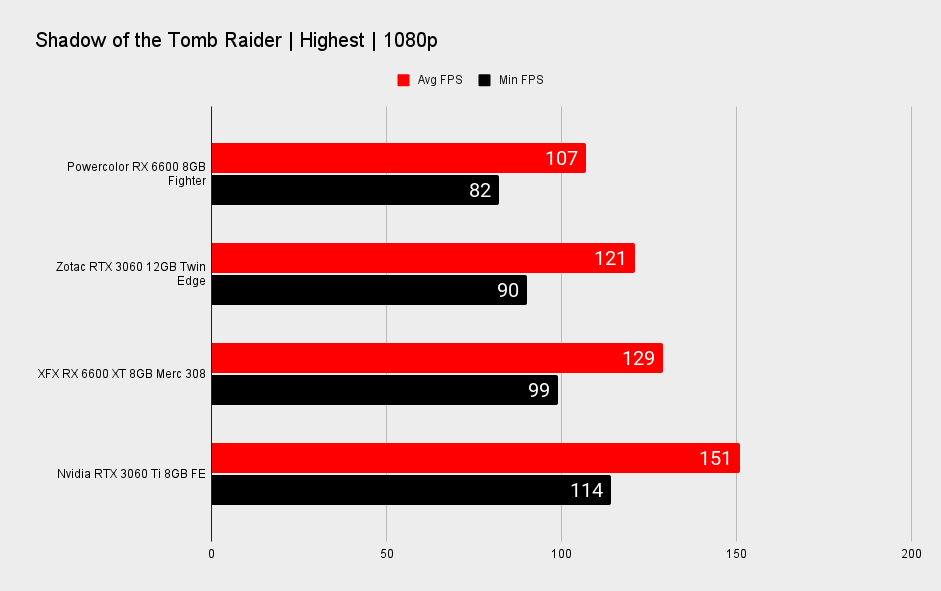
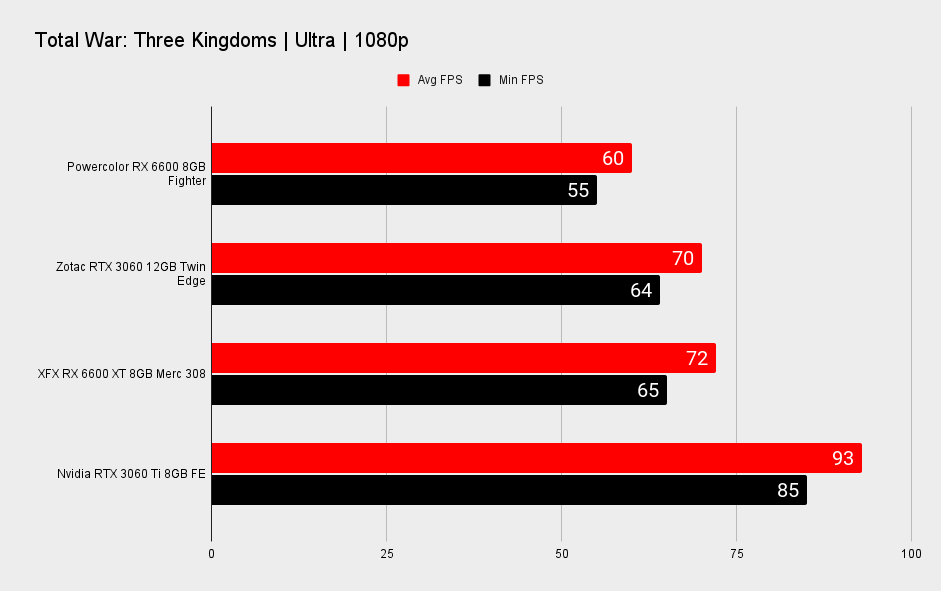

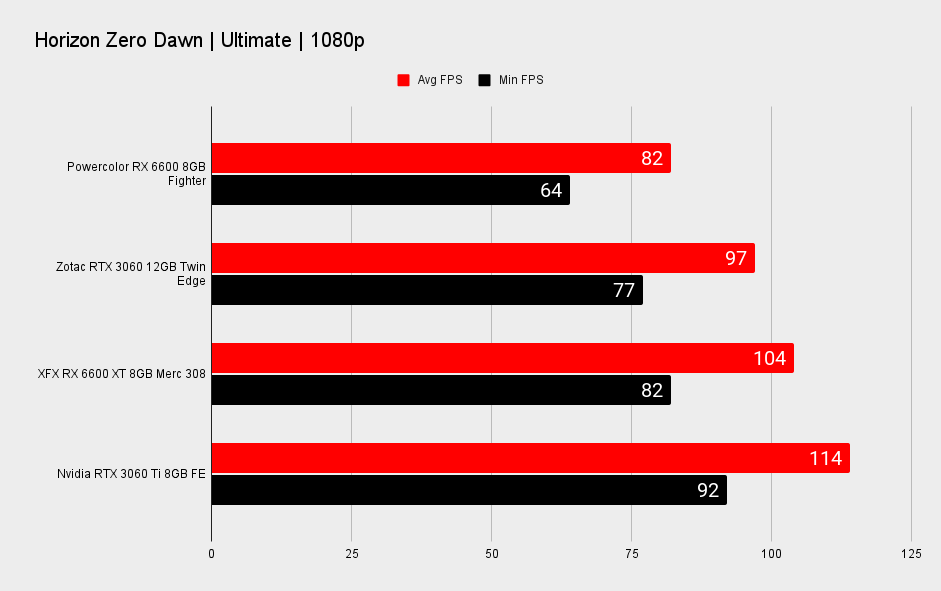
AMD Radeon RX 6600 1440p performance
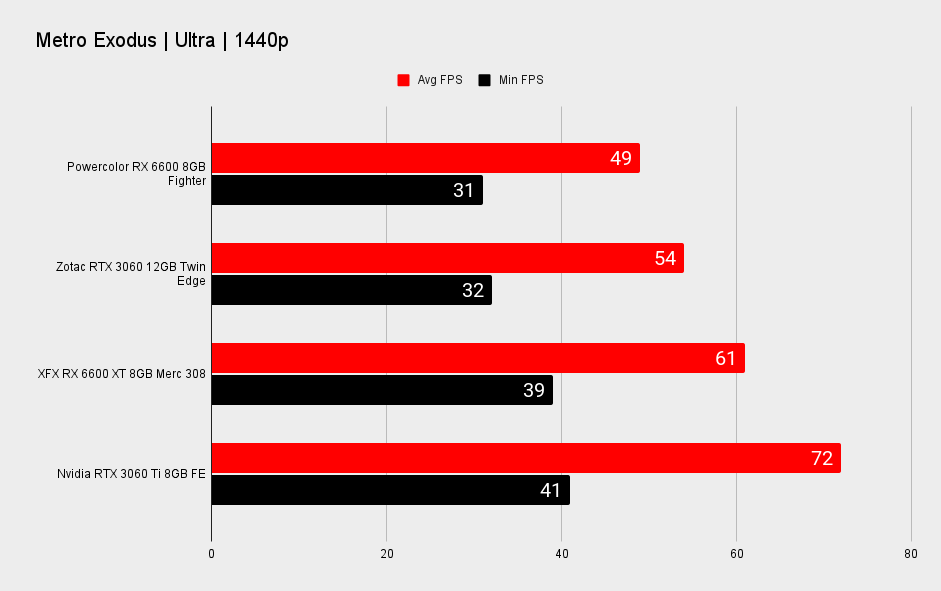
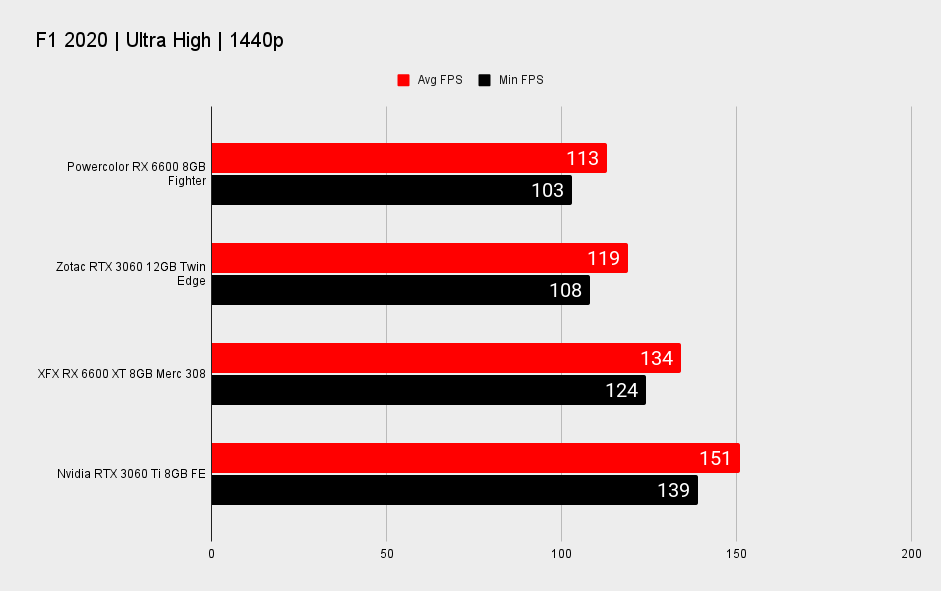
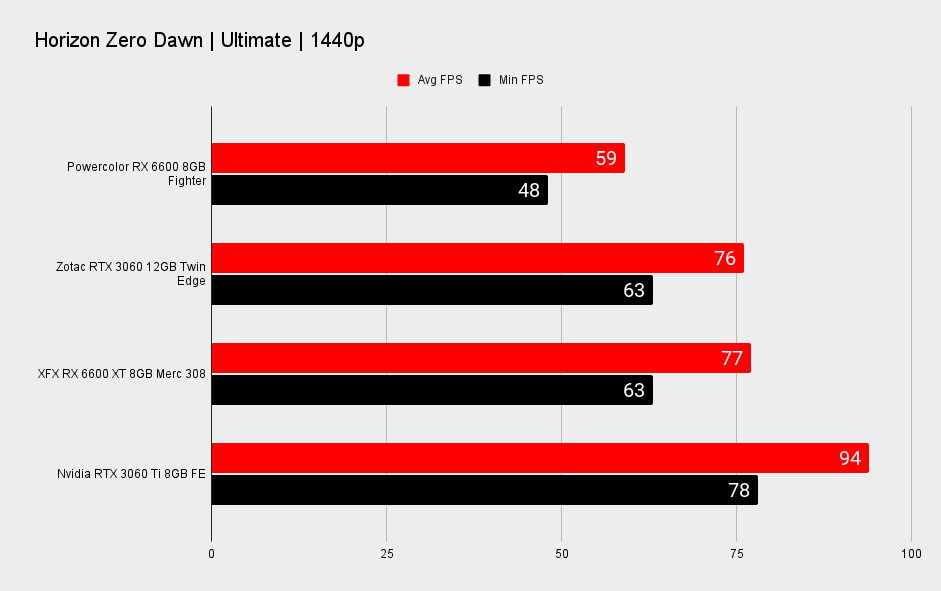
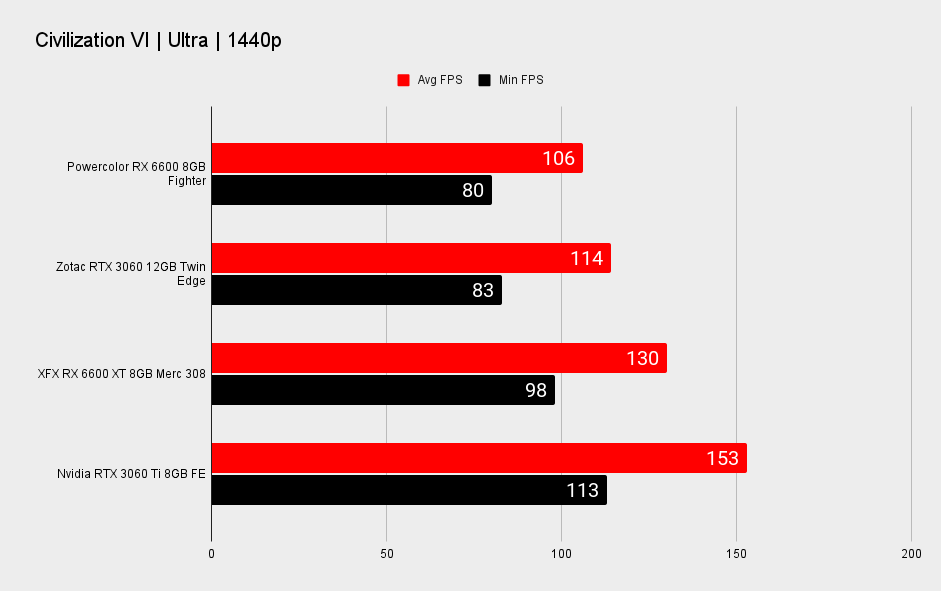
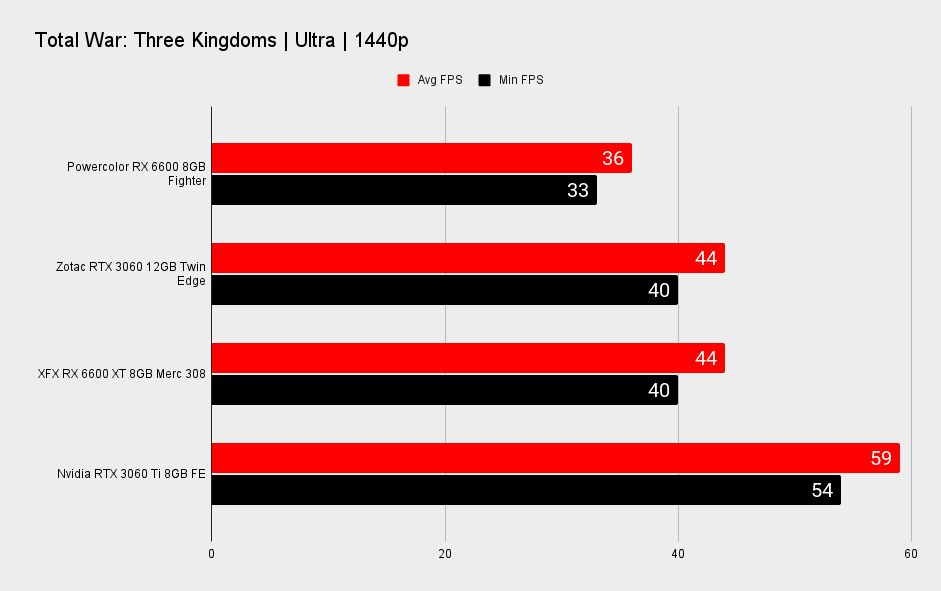
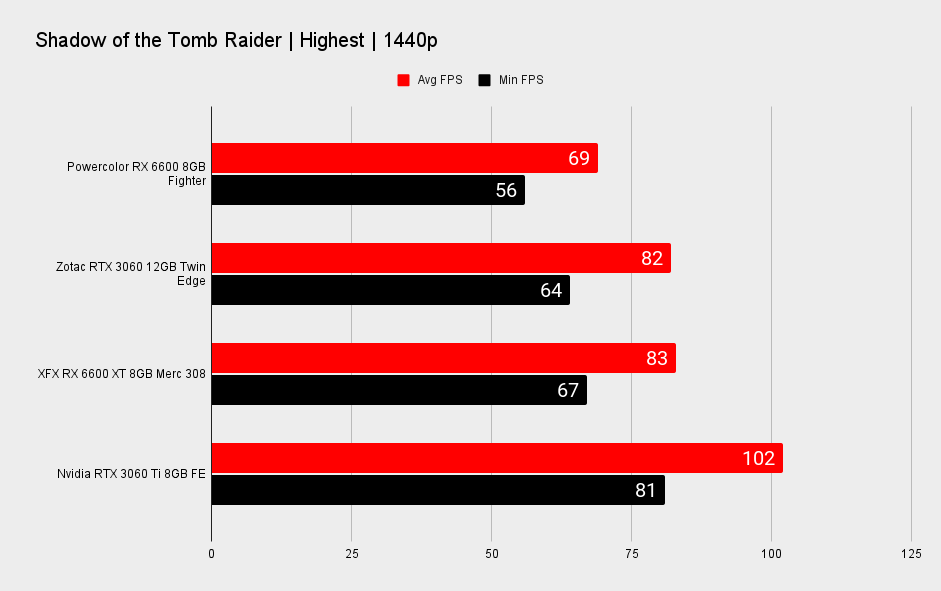
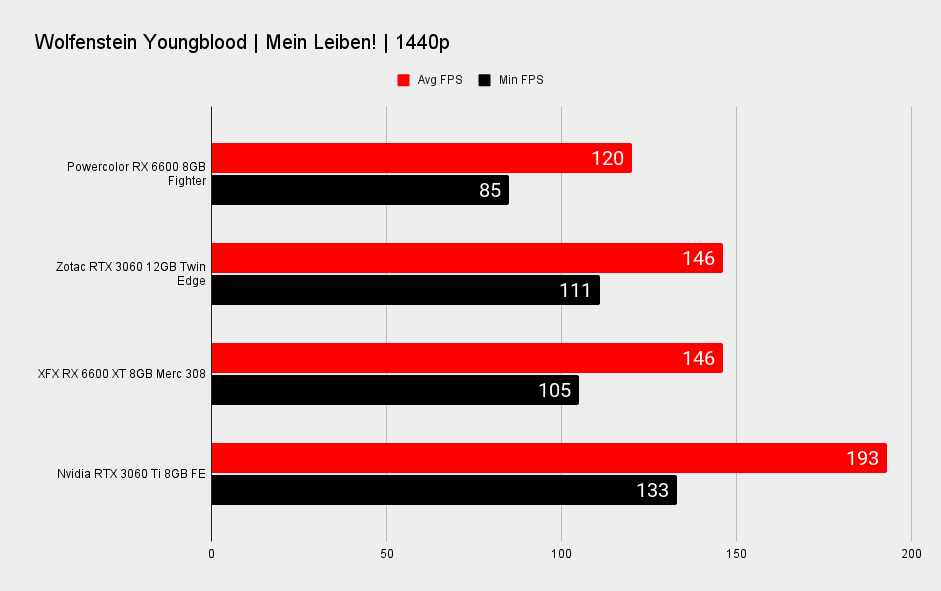
AMD Radeon RX 6600 4K performance
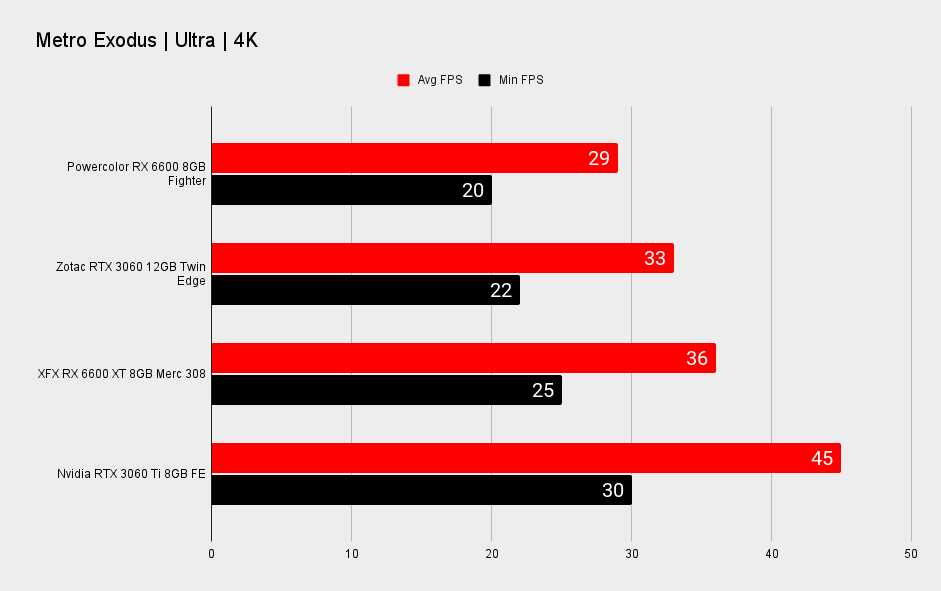
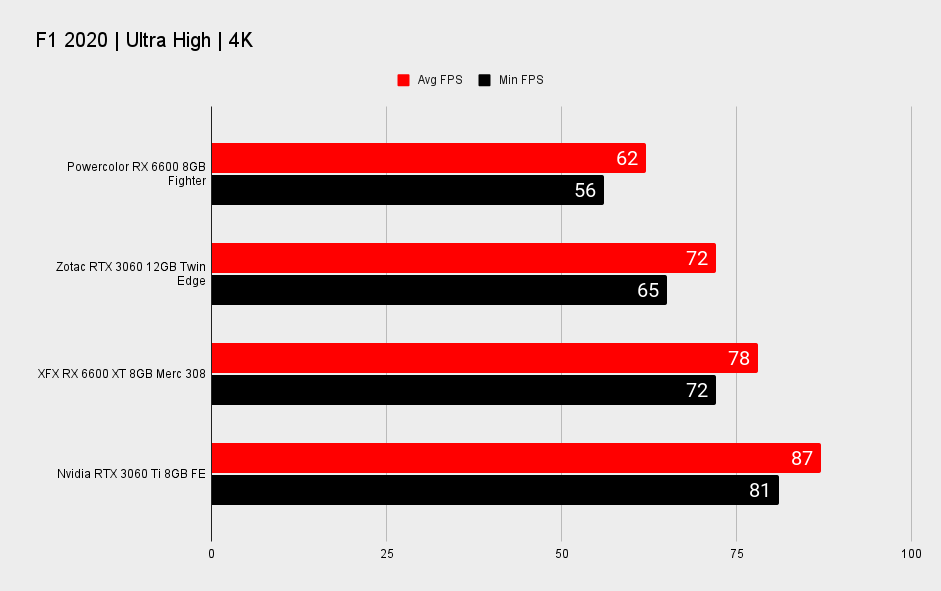
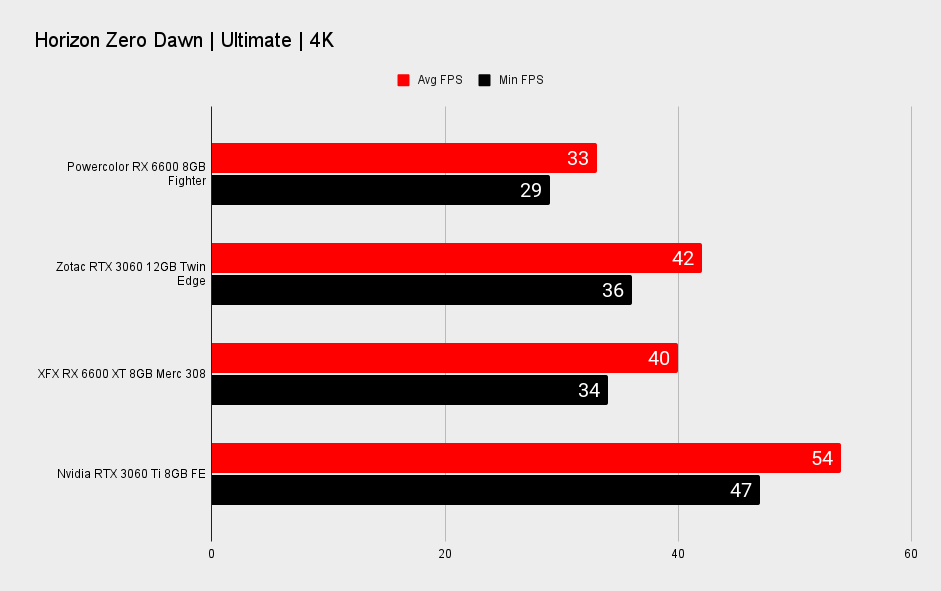
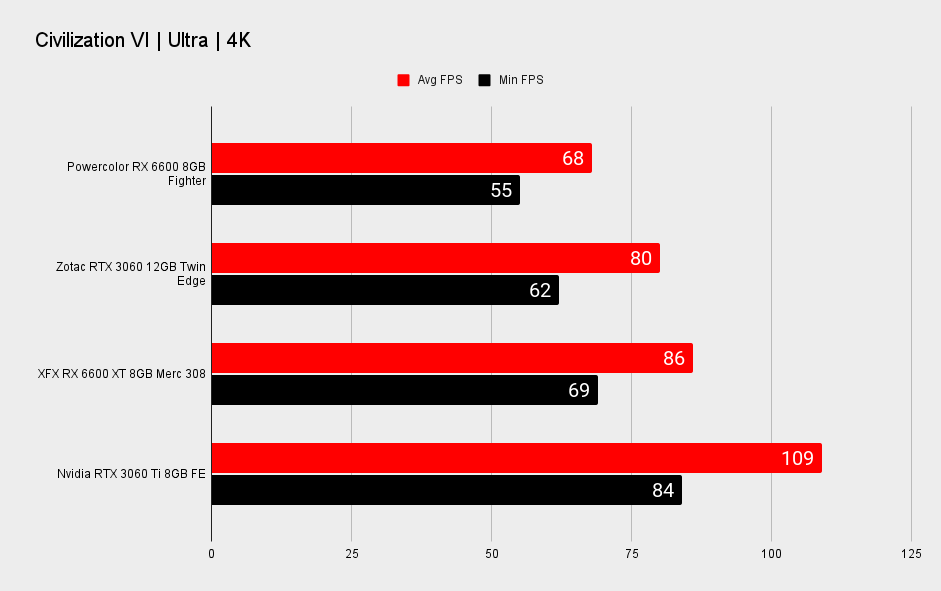
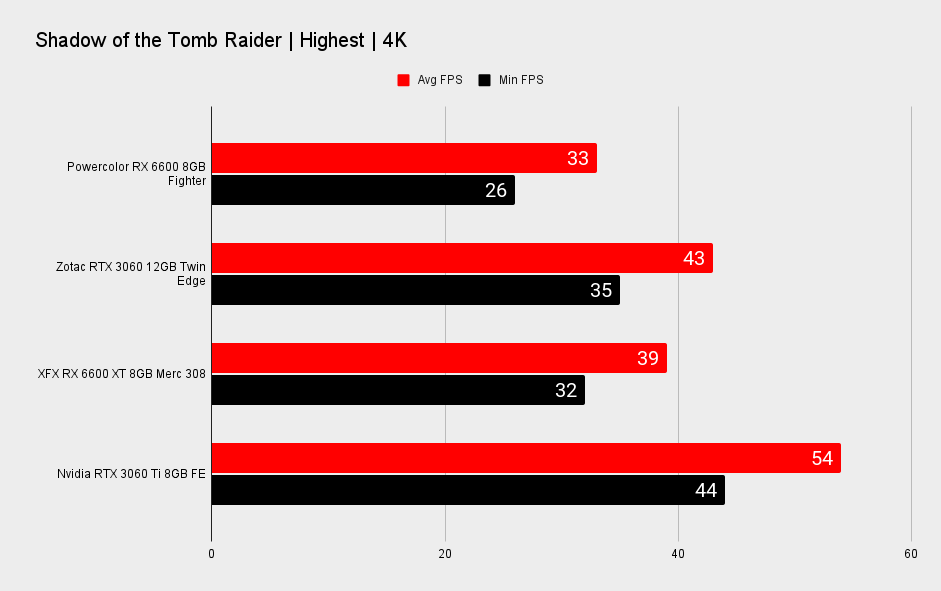

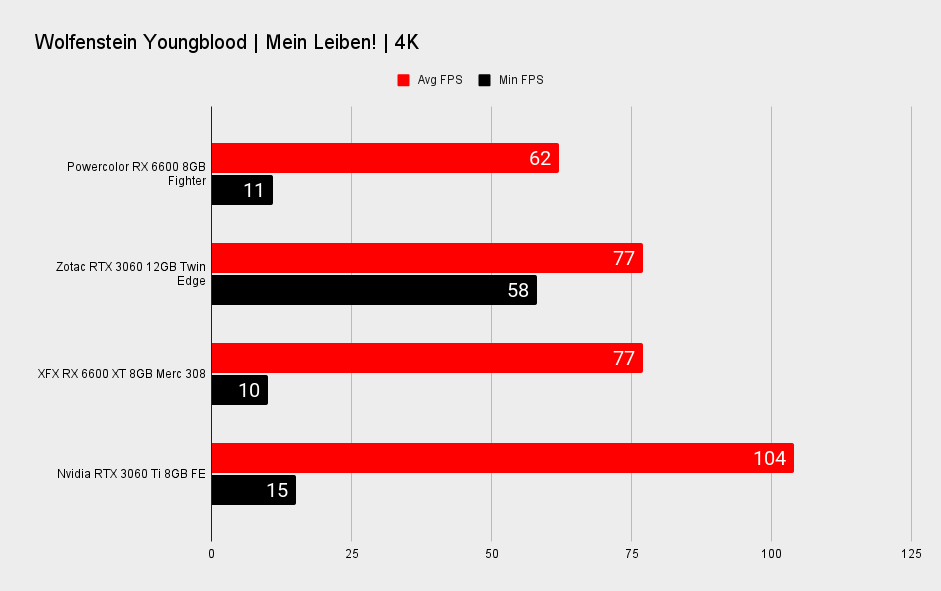
AMD Radeon RX 6600 ray tracing performance

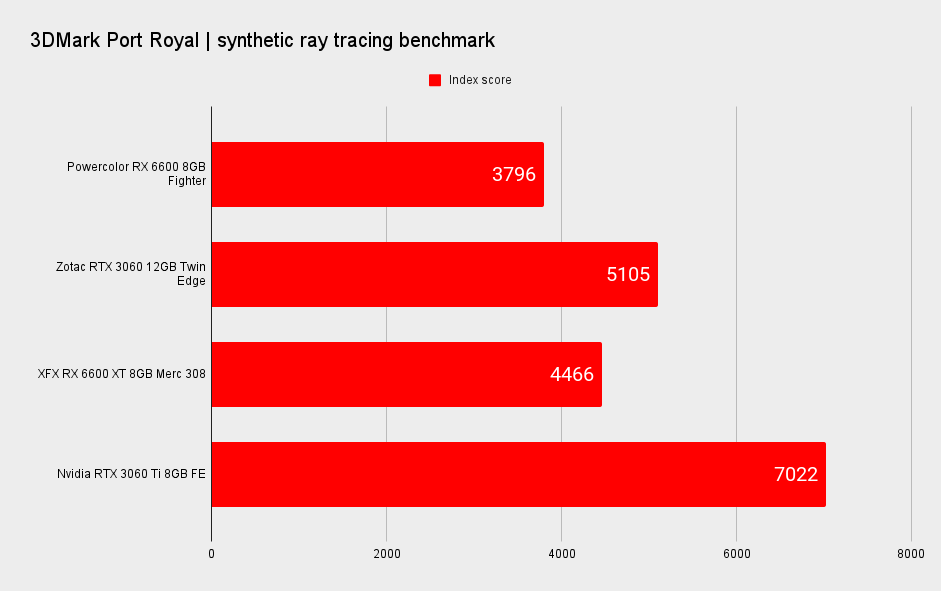
AMD Radeon RX 6600 power and thermals
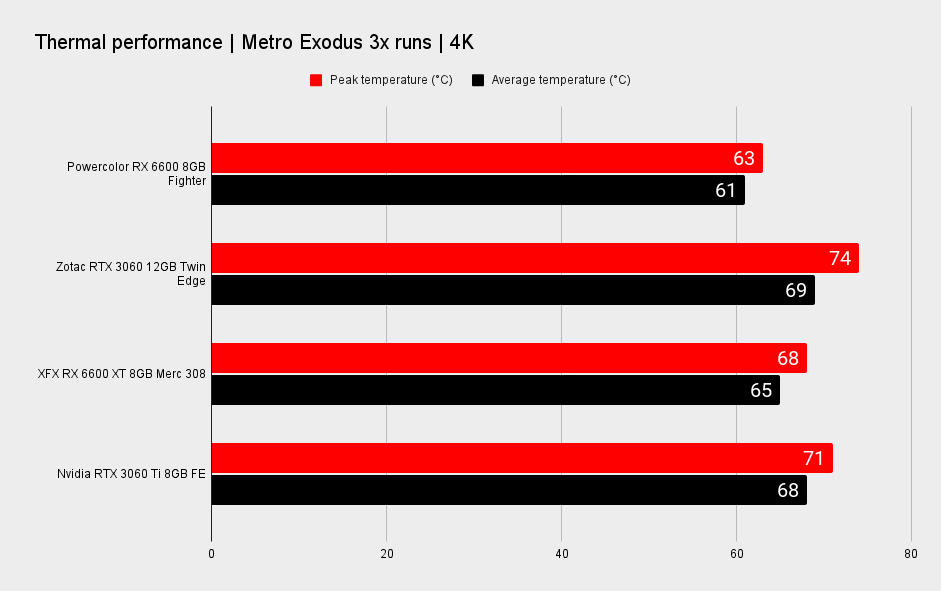
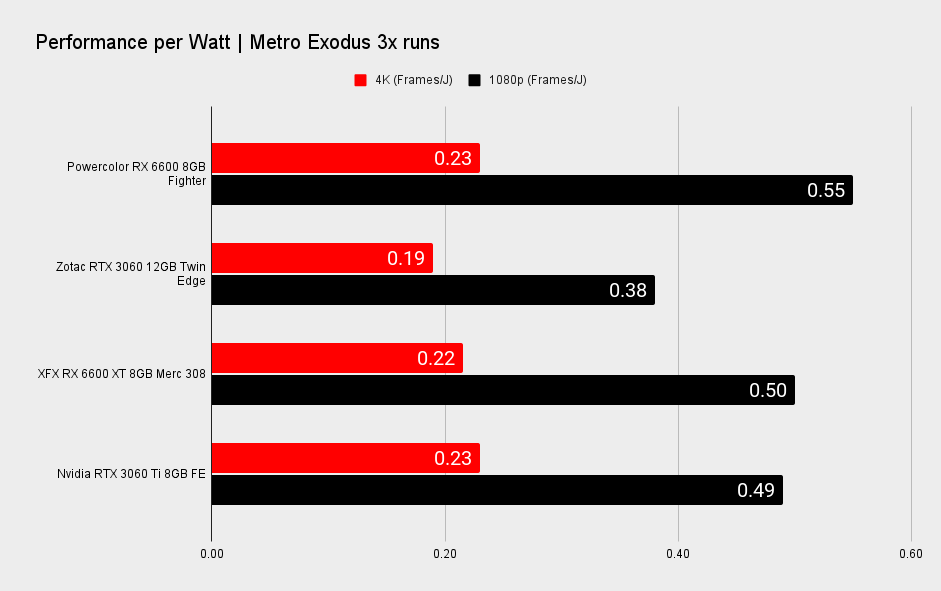
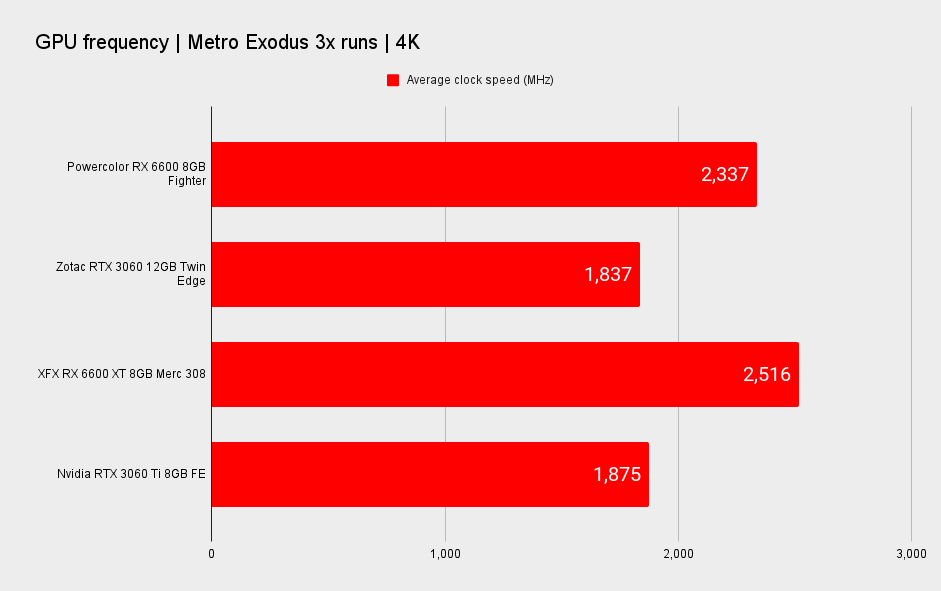
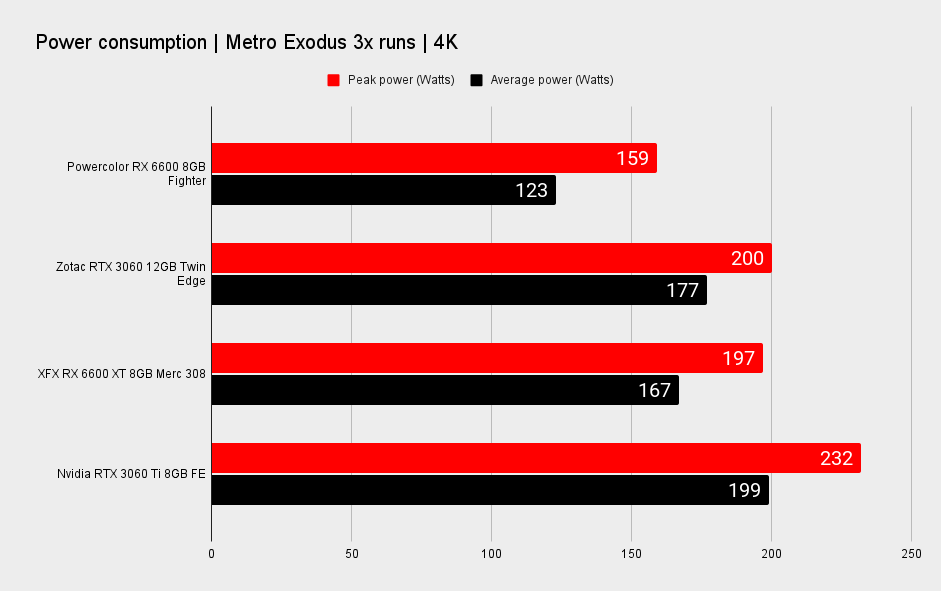
AMD Radeon RX 6600 analysis
How does the Radeon RX 6600 stack up?
The Radeon RX 6600, much like the RX 6600 XT, is unable to break into new territory for today's gaming GPUs. It offers what was already (in theory) available at this price tag, except with an AMD badge on it rather than an Nvidia one. And even saying that is being quite generous to the red team.
It's enough of a match to the RTX 3060 12GB to offer a backup when times are tough, and we all know they are, so perhaps then it offers all it needs to warrant its existence. Though I doubt many will see it as anything but a second-tier alternative to Nvidia's card when it comes with 4GB less VRAM, often lower gaming performance, and one of its more valuable features, FidelityFX Super Resolution, is available cross-vendor.
It's enough of a match to the RTX 3060 12GB to offer a backup when times are tough.
The pendulum further swings in Nvidia's favour when you add in the additional benefit of DLSS support and superior ray tracing cores. Though it must be said neither card is particularly well suited to ray tracing in more demanding games, but you may get away with the odd ray-traced effect here or there.
But perhaps there is a silver lining to AMD's decision to scale back the RX 6600. Perhaps. I wouldn't rule out the decision coming down to ensuring the RX 6600 didn't cannibalise the RX 6600 XT, but I'd suspect by lowering the threshold for clock speeds, power, and, as a result, performance, AMD may be able to use up more Navi 23 GPUs for the RX 6600. Or at least more than a more power-hungry, higher clocked version might otherwise have available to it. That would, in theory, help better the supply of the RX 6600.
There's a good chance that's a rose-tinted view on the situation, but let's not forget that AMD is the master of its inventory, smartly using just about every chip and chiplet TSMC makes for something or other. Right now, it's a question of meeting demand with raw volume, so perhaps it did throw the RX 6600's performance on the sacrificial pyre to do just that.
Without a chip supply crisis, then, it's perfectly possible the RX 6600 could've been a more competitive card.
AMD Radeon RX 6600 verdict
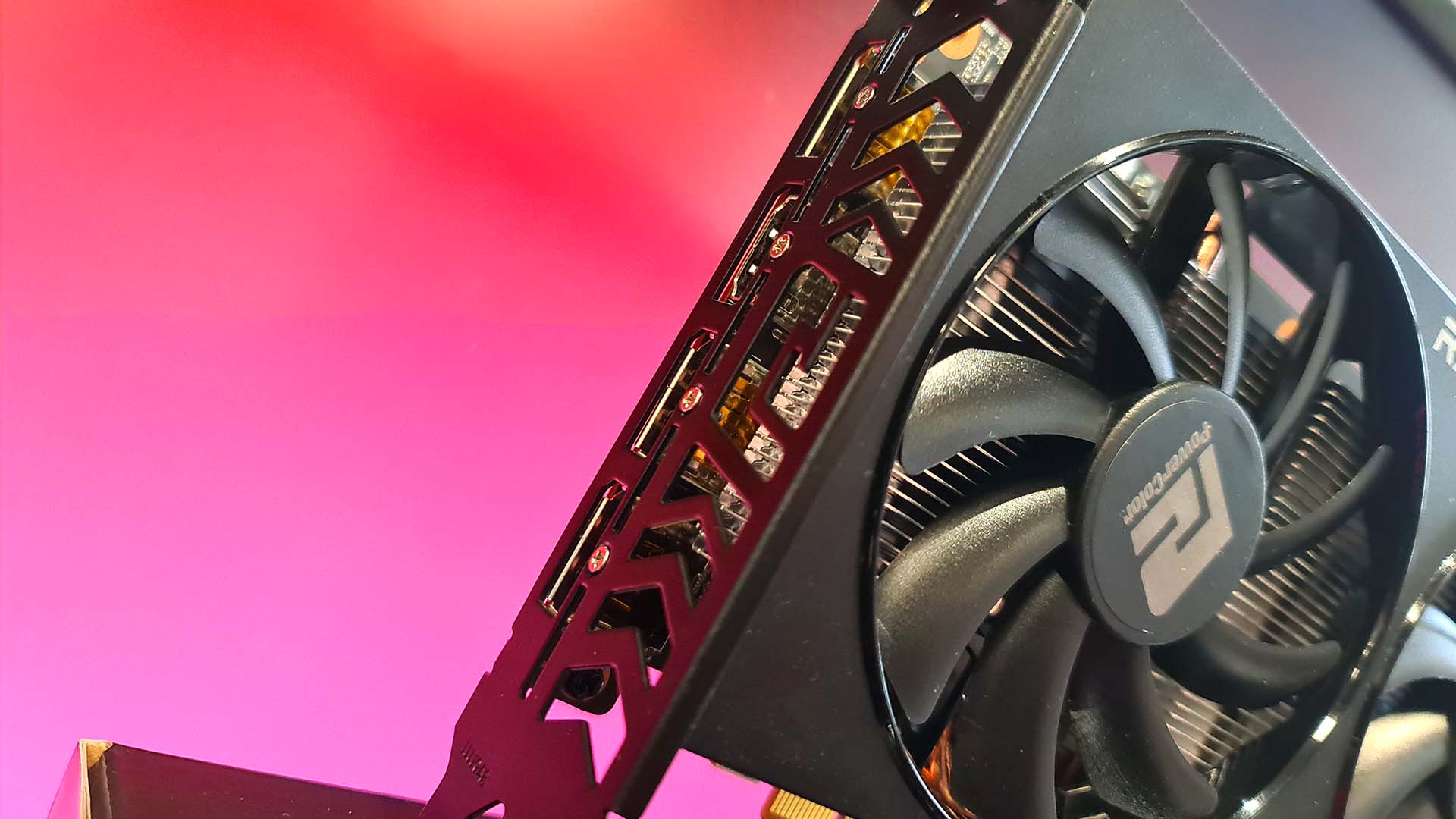
Should you buy a Radeon RX 6600?
Whether you should buy the Radeon RX 6600 comes down to whether you can find an RTX 3060 12GB in stock and at a price close to its $329 MSRP. Nvidia has put together a generally more performant graphics card than AMD at this price point, and one which tends to perform well in most games you throw at it. While the Radeon RX 6600 requires friendly in-game optimisation, SAM, and PCIe 4.0 to churn out the best frame rates.
So the RTX 3060 12GB is the overall better buy—so long as you can actually buy one.
That's not so easy nowadays, which means the Radeon RX 6600 might not be the graphics card you necessarily want, but the one that offers a fine alternative at a cheaper price close. Or at least while stocks last of MSRP cards at launch.
If the RX 6600 XT launch is anything to go by, we may see stock of the RX 6600 survive the launch day blitz and continue for a few days, or even weeks, thereafter. But do move quick if you hope to snatch up a model at the card's baseline MSRP—which is where this quiet and cool Powercolor should sit—the more you spend on an RX 6600 with an aftermarket cooler, the less worthwhile the card becomes.
The Radeon RX 6600 delivers enough for modern 1080p gaming, which is good going considering AMD has preened this package into a much more power-savvy design than the RX 6600 XT. That said, Nvidia's RTX 3060 12GB is still the card we'd recommend at this price point, if you can find one in stock. Otherwise, the RX 6600 makes for a viable, if not sparkling, alternative.

Jacob earned his first byline writing for his own tech blog. From there, he graduated to professionally breaking things as hardware writer at PCGamesN, and would go on to run the team as hardware editor. He joined PC Gamer's top staff as senior hardware editor before becoming managing editor of the hardware team, and you'll now find him reporting on the latest developments in the technology and gaming industries and testing the newest PC components.
